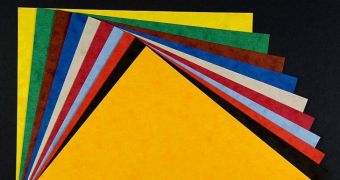Making hardware parts smaller, thinner, and lighter is always a good thing. In fact, it is an ongoing effort for every tech company involved in such things. Even so, however, some advancements can come completely out of left field.
Like the one that a team of Taiwanese researchers introduced to the world not that long ago: memory that has been 3D printed on normal paper and that can fold.
Most prints today are made of plastics, resin, or metal, but paper has been used as well, as a sort of combination between paper stacking and inkjet printing.
What the new research project did was different though. It wasn't paper that was 3D printed. Instead, it was used as a substrate for 3D printed memory that can, as we said, fold.
In addition to the foldability, paper is a good substrate because of how cheap it is. The only issue is its absorption rate: it will soak up liquid like nobody's business, which can be disastrous if even the slightest drop of liquid falls on it, both during the printing process or after.
However, the researchers, like Der-Hsien Lien, Zhen-Kai Kao, Teng-Han Huang, Ying-Chih Liao, Si-Chen Lee, and Jr-Hau He, found a way to compensate for that: coating the paper in carbon.
Once they did that, they created an insulator that would be sandwiched between two electrodes and switched between 0 and 1, to act as the single bit of memory (binary computations are the cornerstone of memory and processing operations). The insulator ended up being a solution of titanium dioxide.
With those things out of the way, all that was left was to inject the insulator into an inkjet printer cartridge (or, rather, something similar to it), so that the printing could actually be done.
After the material was layered on the carbon-coated paper, they added the electrodes, also by printing, only they used a silver solution (they printed it as tiny little dots only 50 microns wide, with 25 micron gaps between them).
The end result was a small sheet of office paper with RRAM printed all over it (resistive random access memory). 1 MB of memory was spread on a single sheet of paper 8.5 x 11 inches / 215 x 279 mm. This memory can retain its state of 0 or 1 (meaning it can retain all data) for 8 minutes after power has been cut.
You won't be able to print 3D foldable memory at home for a long while and it's still unknown when it will even be used by computer and consumer electronics device makers, but it's pretty obvious that it will happen. Or, at least, that some technique derived from this will be employed. The benefits are too clear to be set aside.

 14 DAY TRIAL //
14 DAY TRIAL //